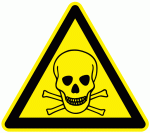Toxicology
|
27 august 2016 09:23:39 |
| IJERPH, Vol. 13, Pages 853: Risk Assessment for Children Exposed to Beach Sands Impacted by Oil Spill Chemicals (International Journal of Environmental Research and Public Health) |
|
Tweet Due to changes in the drilling industry, oil spills are impacting large expanses of coastlines, thereby increasing the potential for people to come in contact with oil spill chemicals. The objective of this manuscript was to evaluate the health risk to children who potentially contact beach sands impacted by oil spill chemicals from the Deepwater Horizon disaster. To identify chemicals of concern, the U.S. Environmental Protection Agency`s (EPA`s) monitoring data collected during and immediately after the spill were evaluated. This dataset was supplemented with measurements from beach sands and tar balls collected five years after the spill. Of interest is that metals in the sediments were observed at similar levels between the two sampling periods; some differences were observed for metals levels in tar balls. Although PAHs were not observed five years later, there is evidence of weathered-oil oxidative by-products. Comparing chemical concentration data to baseline soil risk levels, three metals (As, Ba, and V) and four PAHs (benzo[a]pyrene, benz[a]anthracene, benzo[b]fluoranthene, and dibenz[a,h]anthracene) were found to exceed guideline levels prompting a risk assessment. For acute or sub-chronic exposures, hazard quotients, computed by estimating average expected contact behavior, showed no adverse potential health effects. For cancer, computations using 95% upper confidence limits for contaminant concentrations showed extremely low increased risk in the 10-6 range for oral and dermal exposure from arsenic in sediments and from dermal exposure from benzo[a]pyrene and benz[a]anthracene in weathered oil. Overall, results suggest that health risks are extremely low, given the limitations of available data. Limitations of this study are associated with the lack of toxicological data for dispersants and oil-spill degradation products. We also recommend studies to collect quantitative information about children`s beach play habits, which are necessary to more accurately assess exposure scenarios and health risks. |
| 171 viewsCategory: Medicine, Pathology, Toxicology |
 IJERPH, Vol. 13, Pages 852: The Youth Psychopathic Traits Inventory: Measurement Invariance and Psychometric Properties among Portuguese Youths (International Journal of Environmental Research and Public Health) IJERPH, Vol. 13, Pages 852: The Youth Psychopathic Traits Inventory: Measurement Invariance and Psychometric Properties among Portuguese Youths (International Journal of Environmental Research and Public Health)IJERPH, Vol. 13, Pages 858: Addressing Environmental Health Inequalities (International Journal of Environmental Research and Public Health) 
|
| blog comments powered by Disqus |
MyJournals.org
The latest issues of all your favorite science journals on one page
The latest issues of all your favorite science journals on one page



